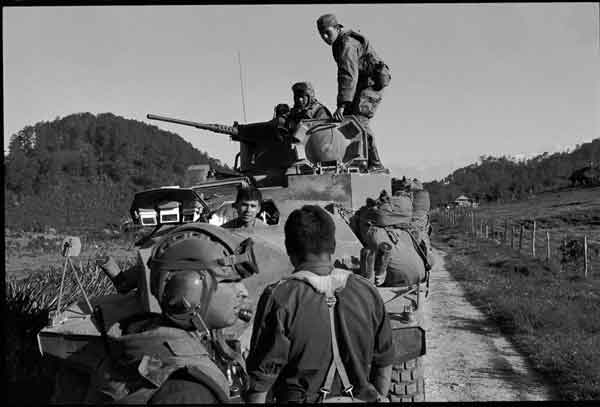From the MEXICO-POLITICAL UPDATE January 13, 1995
CHASE MANHATTAN'S EMERGING MARKETS GROUP MEMO
Riordan Roett
CHIAPAS
The uprising in the southern state of Chiapas is now one-year old and,
apparently, no nearer to resolution. The leader, or spokesman, of the
movement, sub-commandante Marcos, remains adamant in his demand that the
incumbent PRI governor resign and be replaced by the PRD candidate who, Marcos
argues, was deprived of victory by government fraud in the recent election.
Marcos continues to lobby for widespread social and economic reform in the
state. Incidents continue between the local police and military authorities
and those sympathetic to the Zapatista movement, as the insurgency is called,
and local peasant groups who are sympathetic to Marcos and his cronies.
While Zedillo is committed to a diplomatic and political solution th the
stand-off in Chiapas, it is difficult to imagine that the current environment
will yield a peaceful solution. Moreover, to the degree that the monetary
crisis limits the resources available to the government for social and
economic reforms, it may prove difficult to win popular support for the
Zedillo administration's plans for Chiapas. More relevant,
Marcos and his supporters may decide to embarrass the government with an
increase in local violence and force the administration to cede to Zapatista
demands and accept an embarrassing political defeat.
The alternative is a military offensive to defeat the insurgency which
would create an international outcry over the use of violence and the
suppression of indigenous rights.
While Chiapas, in our opinion, does not pose a fundamental threat to Mexican
political stability, it is perceived to be so by many in the investment
community. The government will need to eliminate the Zapatistas to
demonstrate their effective control of the national territory and of
security policy. (Emphasis ours)
And Then Repression

January
Chase Manhattan Bank issues a report calling for the Mexican
government to "eliminate the Zapatistas." At this point, dozens of communities
have publicly defined themselves as Zapatistas, representing well
over 50,000 civilians.
February
On February 9, the army mounts a massive invasion in Zapatista areas
of influence, especially in the Canadas, implementing a strategy of low-intensity warfare (also known as civilian-targeted warfare), Among other things, the army displaces almost 20,000 campesinos and turns Aguascalientes, and
turns it into an army base. The Zapatistas respond by constructing five
new Aguascalientes (centers of indigenous resistance). During the next five
years, over 60,000 troops occupy nearly every corner of the state, establishing
army encampments just meters from most of the well-established
Zapatista communities, and disrupting the lives, economy, and culture of
indigenous communities.
April
Peace talks resume, with both sides agreeing to focus discussions
in six areas.
August
The Zapatistas hold the first international consulta. Over a million
people vote, calling on the EZLN to transform itself into a new independent
political force.
October
Talks begin in San Andres Larrainzar on indigenous rights and culture.
Pictured, Government soldiers man a tank near Patihuitz, a Zapatista village and a regular post for Zapatista Commandante Marcos. In early February 1995, 60,000 Mexican government soldiers fanned into Chiapas in search of Marcos. Larry Towell/Magnum Photos